In early 2025, the Ukrainian Army began reforming to adopt a corps structure. What has happened in the eight months since?
Background to the reform
Following the collapse of the USSR, the Ukrainian authorities considered the most effective strategy to be the demonstrative eradication of the Soviet legacy in order to conceal the global plundering of national wealth.
Since 2014, this has applied to all aspects of life that remind people of their shared history with Russia. At the same time, all of this was done primarily to impress the West and secure their financial support.
The nation’s military was not an exception to this. Large territorial units of troops, known in the Soviet Union as ‘military districts’, were renamed ‘operational commands’ and given names based on the four main directions: ‘North’ (Chernihiv), ‘West’ (Rivne), ‘South’ (Odesa) and ‘East’ (Dnipro). These structures’ functions remained the same: training and supplying troops.
Reducing the number of former Soviet troops stationed in Ukraine intensified later on. By that time, these units had become the armed forces of the newly formed country. In the 1990s, combined-arms and tank armies were reorganised into army corps, which were also disbanded by the 2000s. Ukraine also gradually disbanded its divisions, which made brigades the largest formations in the Ukrainian armed forces.
After the beginning of large-scale conflict in Ukraine in February 2022, the Ukrainian military command integrated temporary bodies into the organisational structure of its army. The front line was divided into areas of responsibility for operational-strategic groups of forces (OSGFs), which comprised operational-tactical groups of forces (OTGFs). These OTGFs, in turn, comprised tactical groups (TGs), which typically consisted of several brigades. Rather than being led by regular commanders These structures were led by officers assigned on a rotational basis instead of regular commanders, who had a relatively low level of interest in the well-being of subordinate military units.
The current chain of command has a major flaw: dual lines of authority. Each brigade must follow the often contradictory instructions of both its operational command and its operational-strategic group of forces.
Currently, there are more than a hundred combat brigades fighting in the Armed Forces of Ukraine, not including auxiliary troops. Each brigade consists of several line battalions and various additional units, including an artillery battery, a reconnaissance company and an air defence detachment. These units are quite small and they do not have their own large-calibre artillery and aviation assets – such forces operate in separate specialised brigades.
Many of the mentioned combat brigades, including seconded units, already resemble divisions and sometimes exceed their numbers. For instance, the 47th Brigade, the main striking force in the Russian Kursk region, had an inflated staff of ten battalions (not including auxiliary units). Together with the attached units, the total number of battalions reached 20 at one point, placing an excessive burden on the command system, which was not designed for such numbers. Furthermore, it is an affront to the commander of such a large formation to remain a colonel while performing the duties of a general. Ukrainian military analysts have repeatedly stated: divisions are much more relevant for the Armed Forces of Ukraine than the corps.
The forces of a single brigade are mainly infantry units, which are insufficient for carrying out serious tasks. At the same time, there are no larger formations within the Armed Forces of Ukraine. OSGFs are responsible for planning, but they don’t participate in combat operations. Many equal formations operate on the front line, whose commanders cannot give orders to each other (for example, a mechanised brigade commander cannot give orders to an aviation or artillery brigade commander, as they are equal in status), causing difficulties in interaction. The senior commander of a tactical group or operational-tactical group of forces does not address such issues. Ideally, the existing brigades would be reformed into divisions, but the Ukrainian command has remained deaf to such proposals.
This approach cannot be said to be entirely without merit. The advantage of brigade organisation over divisional is greater manoeuvrability. The diversity and autonomy of the combat personnel enable the brigade to reorganise its battle order quickly, regrouping along the front and in depth within the operational area. Operational independence allows them to operate separately from the main forces for a long time. However, brigades are unsuitable for large-scale combat operations, where divisions are more appropriate (unlike small-scale armed conflicts, which the current war cannot be attributed to even remotely).
The Ukrainian Armed Forces command skipped the divisional level and decided to move directly to a corps structure. Although the reform was not announced until February 2025, preparations for it began two years earlier during the failed counteroffensive in summer of 2023. At that time, the 9th and 10th Army Corps, the Marine Corps and the Airborne Assault Corps were deployed. The 11th Corps was subsequently created from the reserve corps in 2024.
These new formations proved to be an unusual and confusing structure – the subordinate brigades did not perform combat tasks as a single unit, but were scattered by the OSGF command and fought separately. The authority of the corps commander was also unclear, except that he joined the threesome in the existing chain of command. Orders to brigade commanders were now given not only by their superiors in the Operational Command and the OSGF, but by the corps commander too.
In light of its past failures, the Ukrainian command has overhauled the concept of the corps structure. In the updated version, the OSGF and OTGF were abolished, with their powers transferred to the corps. These corps would be deployed to specific sections of the front, accompanied only by their own brigades and attached units. Under the principle of single command, the commander of the formation would possess full authority and could independently lead subordinate units to carry out orders from the leadership without consulting anyone. At the same time, they would be relieved of the responsibility of overall war strategy planning. The corps was also provided with significant support forces, including large-calibre artillery and frontline aviation, which the individual brigades lacked. It was a good idea, though a belated one.
The intention was to create 20 corps, each comprising four to five brigades and covering a zone of responsibility up to 150 km (or less in particularly ‘hot’ areas).
Measures taken
The first new-style unit, the 3rd Army Corps, was formed in March 2025. It was based on the Azov Army Brigade and placed under the command of Brigadier General Andriy Biletsky, the founder of the Azov Battalion, which has been operating since 2014. Major changes were subsequently made to the organisational and staffing structure of the Armed Forces of Ukraine. These included creating nine new corps within the ground forces (numbers 12 to 21, excluding 13), dividing the airborne assault corps into the 7th and 8th, and assigning the number 30 to the marine corps.
Thus, as of October 2025, the Ukrainian land forces consisted of the following:
- 3rd Army Corps: one of the most combat-ready units, designed for operations in the most intense areas of the front;
- 7th and 8th Airborne Assault Corps: perform rapid response force tasks;
- 9th, 10th and 11th Army Corps: deployed in 2023 but not in fact operating as Army Corps;
- 12th Army Corps: formed on the basis of Kyiv’s defence forces and resources, responsible for defending the capital;
- 14th Army Corps: in the Kharkiv direction and also partially responsible for defending Kyiv;
- 15th Army Corps: subordinate to the Northern Operational Command and operating in the Chernihiv direction;
- 16th Army Corps: deployed in the Kharkiv direction;
- 17th Army Corps: deployed in the Zaporizhzhia direction;
- 18th Army Corps: being formed in the Cherkasy region and likely to reinforce the Armed Forces of Ukraine in the Dnipro direction;
- 19th Army Corps: subordinate to Operational Command South;
- 20th Army Corps: subordinate to Operational Command East, operating in the Dnipro direction;
- 21st Army Corps: subordinate to Operational Command North;
- 30th Marine Corps: combines the regular forces of the Ukrainian Marine Corps and is also responsible for the combat use of unmanned boats.
In addition, two units of the Ukrainian National Guard, which is part of the Ministry of Internal Affairs, have been deployed on a similar basis: the 1st Azov Corps (not to be confused with the aforementioned Azov Army Brigade – the two units share a common history, but are subordinate to different departments), and the 2nd “Khartia” Corps (based on the 13th National Guard Brigade, which performed well in battles in the Kharkiv area).
As part of the reform of the armed forces, the Ukrainian command is reviewing the staffing structure of individual battalions. Some are being disbanded, others are being expanded into brigades, and the remainder are being transferred to existing brigades as line units. This is particularly evident in the case of territorial defence units. 51 separate battalions will be incorporated into various territorial defence brigades in order to optimise the structure of the army and eliminate redundant elements of troop command. Some of these units are already subordinate to various existing corps, and the remainder are expected to join them by 2026.
Political intrigues that ruin everything
The changes in the structure cannot be considered in isolation from another important aspect of state structures: internal political intrigue. In this case, it is perhaps precisely these intrigues that are undermining the efforts of those who contributed to the reform of the Armed Forces.
The story centres on two main characters: the Commander-in-Chief of the Armed Forces of Ukraine, General Oleksandr Syrskyy, and his formerly promising successor, Major General Mykhailo Drapaty.
On 29 November 2024, Zelensky appointed Drapaty as commander of the ground forces. This was a highly significant appointment: it is considered the third most important position in the army after Commander-in-Chief and Chief of the General Staff, and Syrsky himself previously occupied it.
Once he had reached the top, Syrsky began replacing the former Armed Forces commander Valery Zaluzhny’s loyal associates with his own appointees. This included the position of commander of the ground forces, which was taken by his close friend Andriy Pavlyuk.
Ukrainian Armed Forces servicemen previously described the dual power situation that arose when the current commander-in-chief was still in charge of the land forces as “there is Zaluzhny’s army and Syrsky’s army”. The appointment of the completely loyal Pavlyuk allowed Syrsky to temporarily resolve this problem.
President Zelensky was dissatisfied with Syrsky’s failure to defeat the enemy and began looking for a replacement. Pavlyuk remained in office for around nine months before being replaced by the highly promising Mikhail Drapaty.
His biography deserves closer attention.
Age 42, Drapaty is one of the younger generation Ukrainian officers who received their military education after the collapse of the Soviet Union. In 2014, as commander of a battalion of the 72nd Brigade he personally broke through the barricades in an infantry fighting vehicle in the centre of Mariupol, where pro-Russian activists were operating, becoming famous.
Drapaty on an infantry fighting vehicle breaks through barricades in the center of Mariupol, 2014
Since the start of the war in 2022, he had primarily held rear positions. In May 2024 he was appointed commander of the OTGF in the Kharkiv area, a role he fulfilled successfully. In September 2024 he was transferred to another hotspot on the frontline in the Luhansk region, where he organised a competent defence of Toretsk, significantly slowing the advance of Russian troops. His success in conducting complex operations led Zelensky to conclude that he was worthy of leading combat operations at the strategic level. Meanwhile, rumours circulated that the new commander of the ground forces could be Syrsky’s successor. Ukrainian soldiers received this news with enthusiasm.
Drapaty remained in office for even less time than his predecessor Pavlyuk – only six months. He resigned on 3 June 2025, two days after the Russians launched a missile strike on a Ukrainian training ground in the village of Cherkasskoye in the Dnipropetrovsk region on 1 June, resulting in the loss of more than 75 servicemen.
This footage shows an Iskander missile strike on a Ukrainian Armed Forces training centre near the village of Cherkasskoye in the Dnipropetrovsk region.
Zelensky did not accept Drapaty’s resignation, instead transferring him to the position of Commander of the Joint Forces (this role is responsible for the planning and combat operations) as well as the commander of Dnipro Operational-Strategic Group of forces. Drapaty was replaced by Major General Gennady Shapovalov, who lacks significant personal authority or influence within the Armed Forces. Syrsky managed to take control of this area.
The commander-in-chief did not stop there, prioritising political intrigues over increased combat capability of the Ukrainian army.
At the end of September, the Dnipro OSGF was disbanded as part of the reform, and its duties were taken over by the relevant corps. Drapaty was transferred to command the defence in the north-east, where the Russian Armed Forces are advancing rapidly and likely to capture the cities of Liman and Kupyansk soon. This could result in him being labelled a failure. It remains to be seen what will happen to him next.
Although Syrsky announced a complete transition to a corps, only corps headquarters are actually present ‘on the ground’, where they continue to command the various scattered units under their command.
Therefore, the corps system is no different from the previous OSGF and OTGF structures. Meanwhile, separate OTGFs continue to function and even be created. For instance, to regain control of the Serebryansky forest (in the Luhansk direction), which is taken over by the Russians, a separate OTGF was formed at the end of September. It failed to accomplish its objectives.
A good example is the area of operation of the 1st Azov Corps, where only one brigade directly from the formation is operating. The rest units are simply operating in the same direction. This pattern is observed across the entire front.
Even under these conditions, Syrsky continues to exploit the reforms for personal gain in the power struggle.
This is evident from the replacement of the commanders of the 17th and 20th Corps on 15 September ‘due to management errors that led to the loss of positions’. This approach is one of the most criticised in the Armed Forces of Ukraine – competent commanders are often sacrificed for the sake of media victories, while enormous cost of possibly regaining lost positions are ignored. The current situation has led to a ‘vertical of lies’ – a series of positive reports to the higher command when it is more profitable not to report lost positions. Syrsky especially does not like to tell Zelensky bad news.
The structural problems within the Armed Forces of Ukraine run much deeper than merely establishing a corps organisation. To significantly increase efficiency, many other issues must be addressed. Given the ongoing Russian offensive and the constant reduction in available resources, this appears to be a very challenging task.
MORE ON THE TOPIC:




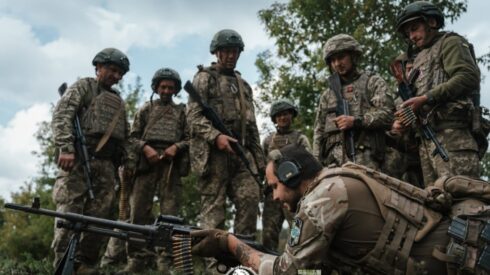
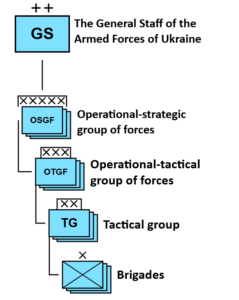
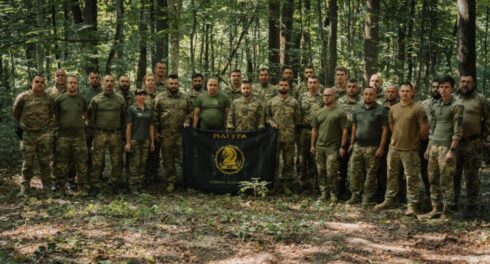
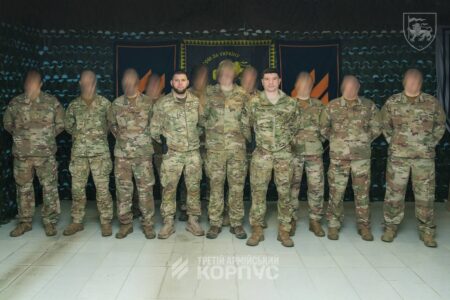
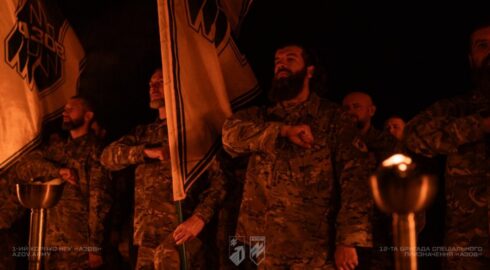
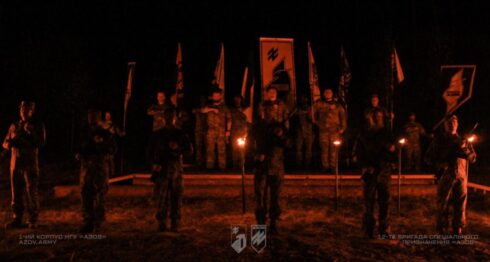
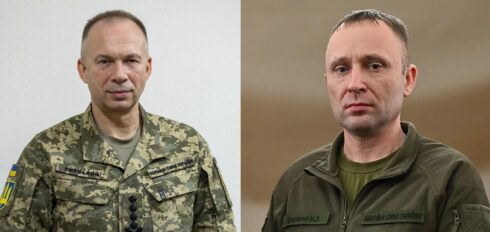
home based job that pays more than $8,000 per month by doing simple tasks on a laptop or mobile device part-time. last month, i earned $6784 from this job by working 4 hours per day online. very simple jobs to do, and the earnings are insane.
here →→→→→→→→ https://www.earnapp1.com
i am bringing in cash from home with facebook. i got $15000 in this month for doing effortlessly home employment. i work in my low maintenance just 3 to 4 hours every day on kax facebook. everybody can win more money effectively from home. for more data visit underneath this site
https://smartpay01.pages.dev/
home based job that pays more than $14,000 per month by doing simple tasks on a laptop or mobile device part-time. last month, i earned $14783 from this job by working 4 hours per day online. very simple jobs to do, and the earnings are insane.
here →→→→→→→→→→ https://www.money63.com
i see that the spammers have realized that the restriction on voting allows them to post the advertising links with impunity….
meanwhile budanov’s kiddies are busy voting at the headline for anything that supports the nazis – as this article does.
only effective americunt reform genocide all inferior americunt species